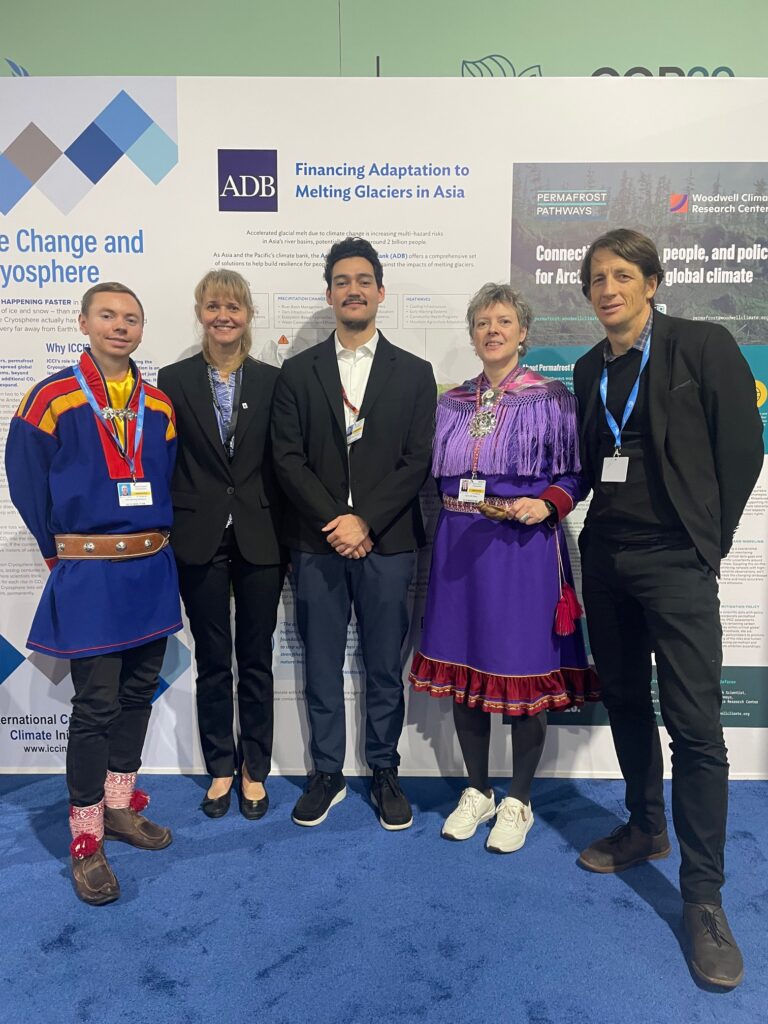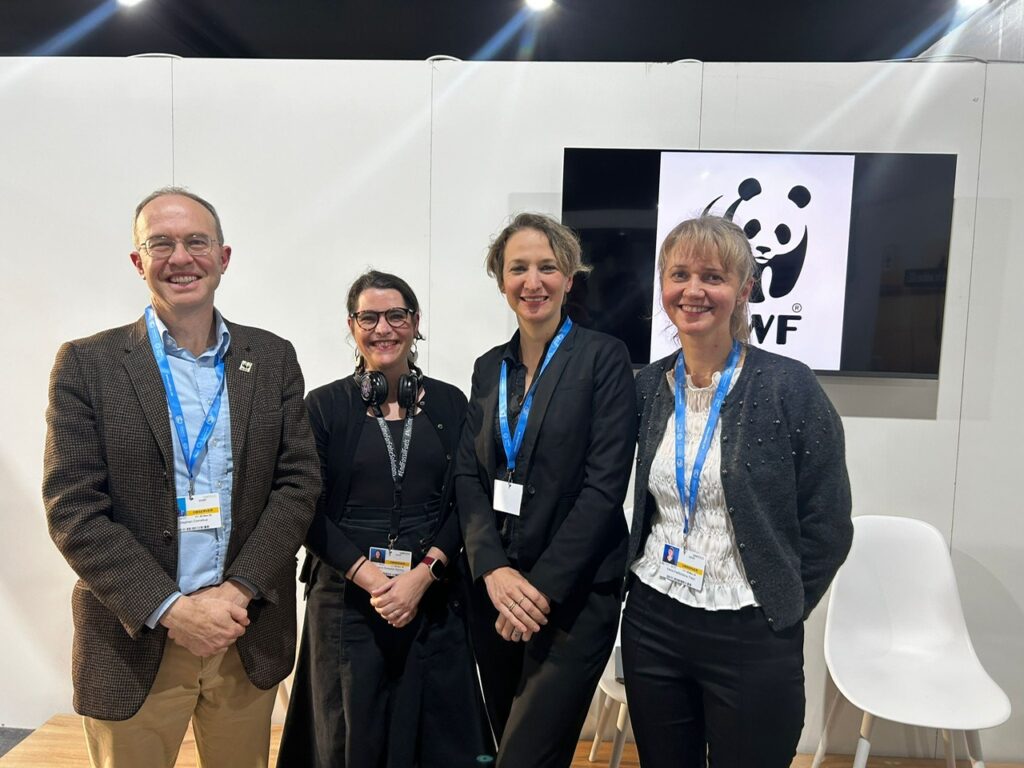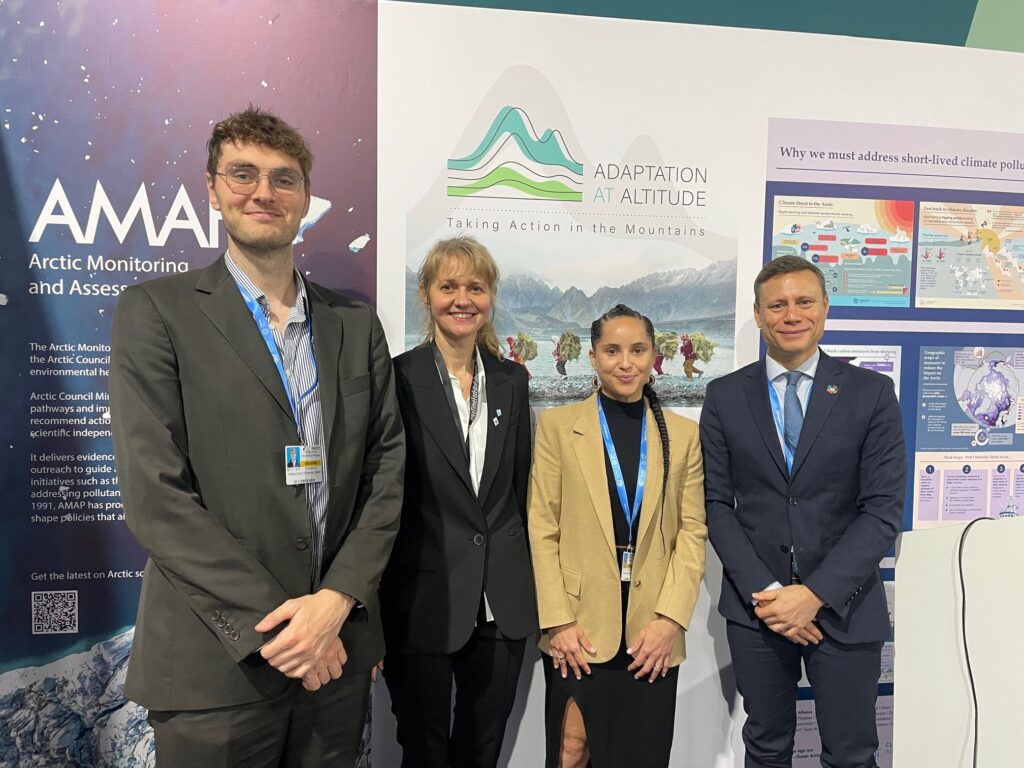Elena Tracy, WWF Global Arctic Programme, speaking to the business and investment audience at the World Climate Summit. Photo: © World Climate Summit
Features
COP29 results and what they mean for the Arctic
- Climate Change
- Oil and gas
From 11-24 November 2024, nations convened in Baku, Azerbaijan, for COP29, the UN Climate Conference, to negotiate the critical next steps needed to prevent the climate crisis from escalating further and to fulfill the goals of the Paris Agreement. The main goal was to limit global temperature rise to 1.5°C, a target that remains within reach only through immediate and transformative actions. While discussions focused on financial assistance for developing countries, there are significant risks associated with the outcome of this meeting, particularly for Arctic communities and the wider Arctic region.
The disconnect between climate finance and Arctic needs
The main outcome of COP29 was the adoption of a climate finance commitment aimed at supporting the Global South. However, the agreed amount of USD $300 billion to be mobilized annually falls significantly short of the USD $1.3 trillion needed to address the global climate crisis. Additionally, the agreement lacks subgoals for financing adaptation efforts and compensating for loss and damage—two critical pillars of climate finance negotiations at COP, alongside mitigation.
This financial aid does not, however, extend to Arctic and Indigenous communities, despite their position on the frontlines of the climate crisis.These communities live in a region warming at three to four times the global average, where climate-induced changes are both rapid and visible. These include the loss of summer sea ice, ocean acidification, thawing permafrost, and coastal flooding. The accelerating warming is also melting the Greenland Ice Sheet and Arctic glaciers, contributing to rising sea levels worldwide.
Yet, these vulnerable Arctic communities are excluded from receiving adaptation and loss-and-damage assistance under current UN climate finance mechanisms. These mechanisms operate on a country-to-country basis, primarily channeling climate mitigation and adaptation funds from developed to developing nations, leaving Arctic communities without support.

Creating space for nature event on 13 November 2024. Left to right: Per Henning Mathisen, Arctic Youth Network and Saami Council; Elena Tracy, WWF Global Arctic Programme; Louis Papis Chemnitz, Inuit Circumpolar Council (ICC), Greenland; Gunn-Britt Retter, Saami Council; and Vance Gulbert, International Institute for Sustainable Development. Online participant (not showing on this photo): Ksenia Vakhrusheva, Bellona International; and Gavin Allwright, International Windship Association.
The risk of fossil fuel expansion
Another disappointing outcome of COP29 was the failure to renew the call to transition away from fossil fuels, a crucial message highlighted at COP28 in Dubai. This omission sends a dangerous signal to fossil fuel-producing nations, including those in the Arctic, that continue to expand oil and gas production despite the climate crisis. Countries like Russia, the US, and Norway are still issuing new licenses for oil and gas exploration in the Arctic. This expansion of fossil fuel projects poses further risks to Arctic ecosystems, which are among the most vulnerable on the planet.
At COP29, the WWF Global Arctic Programme emphasized the importance of halting the expansion of fossil fuel projects, especially in ecologically sensitive areas. Our new research brief, Trends in Arctic Oil and Gas Production and Associated Emissions, released during COP29, highlights the urgent need to prevent further industrialization of the region to avoid catastrophic impacts on Arctic biodiversity and climate stability.

Left to right; Stephen Cornelius, Deputy Practice Leader, WWF CEP, Helena Spiritus, WWF Global Oil and Gas Transition Lead, Florenzia Librizzi, Programme Director, Earth Insight, and Elena Tracy, WWF Global Arctic Programme.
The Arctic’s ticking clock
As we look ahead to COP30 in Belém, Brazil, the window of opportunity to prevent irreversible damage to the Arctic and its communities is closing. The failure to address fossil fuel expansion and insufficient financial commitments to climate adaptation are particularly harmful to the Arctic, where the impacts of climate change are already being felt. Arctic states must step up—not only to mitigate global warming but also to invest in adaptation measures to protect their own Arctic regions.
The international community must recognize that the stakes for the Arctic are incredibly high. The transition away from fossil fuels is a global necessity, and Arctic nations must lead by example in reducing emissions and protecting vulnerable communities. The risk of inaction is not just local; it has profound global implications, particularly in terms of rising sea levels and the loss of critical ecosystems that regulate the global climate.

Busting myth around short lived climate pollutants event on 14 November 2024. Left to right: Dr, Robbie Mallet, climate scientist, the Arctic University of Norway, Dr. Elena Tracy, WWF Global Arctic Programme, Eli Menezes, Say No to LNG; and Roel Hoenders, Head of Climate Action and Clean Air, International Maritime Organization. Online participants (not included in this photo): Dr. Sian Prior, Lead Advisor, Clean Arctic Alliance.